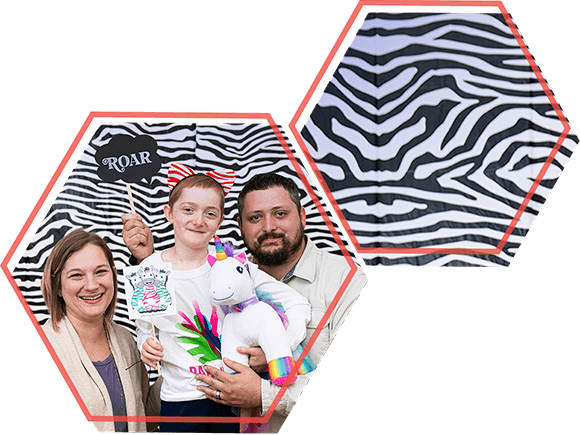Patients + Community:
Leukocyte Adhesion Deficiency-I (LAD-1)
Resources

Leukocyte Adhesion Deficiency-I is a rare genetic immune disorder that predisposes patients to recurrent and fatal infections, often resulting in death within the first two years of life.
FAQs about Rocket’s Gene Therapy Approach to LAD-I
LAD-I is a rare genetic disorder affecting the immune system caused by a defect in a single gene known as ITGB2. Patients with severe LAD-I can develop life-threatening infections because their white blood cells are unable to leave the bloodstream to fight them. Without a successful bone marrow transplant, severe LAD-I is most frequently fatal during the first 2 years of life.
Blood stem cells are first collected from a patient. These stem cells are then genetically modified to introduce a correct copy of the ITGB2 gene using a virus that has been changed in the laboratory, so that the virus cannot grow, spread or cause an infection. The genetically modified stem cells are returned to the patient after the patient receives a type of chemotherapy medication called busulfan to remove existing bone marrow cells in order to make room for the genetically modified stem cells to grow.
Patients with severe LAD-I who are at least 3 months old and who do not have an available HLA-matched sibling donor for bone marrow transplant.
- University of California, Los Angeles (UCLA), California, USA
- Hospital Infantil Universitario Niño Jesús, Madrid, Spain
- University College London, Great Ormond Street Hospital for Children (UCL GOSH), London, UK
Before patients join the study, they will have to undergo several tests at the clinical center to determine whether they are eligible to join the trial. Following confirmation that a patient meets the eligibility criteria for the trial, participating in the study will involve:
- Stem Cell Collection:
A patient will receive medication to make stem cells enter the blood from the bone marrow. These stem cells have the potential to make different blood cells in the body for the remainder of a patient’s life. The stem cells will be collected from the body through a catheter temporarily placed in a vein. This procedure is called apheresis. - Infusion of Genetically Modified Stem Cells (the Investigational Gene Therapy):
A patient’s stem cells will be genetically modified in a laboratory to introduce the correct copy of the ITGB2. Prior to receiving the new cells, the patient will receive the chemotherapy medication busulfan to remove the existing bone marrow cells to make room for the genetically modified cells. The patient will then receive an infusion of these cells through the catheter. - Follow-up after Administration of the Investigational Gene Therapy:
Patients will need to return for follow-up visits, including blood and bone marrow tests, over the next 2 years. In addition, patients will have long-term follow-up with their home physician approximately 1-2 times per year for another 13 years
Financial support, including travel arrangements and housing accommodations for patients and a family member, both for the treatment and follow-up visits, will be provided. This will also include assistance with passports, medical visas and translation services for patients and families if these are needed.
Send any questions to LADclinicaltrial@rocketpharma.com.
To read our Expanded Access statement, click here.
